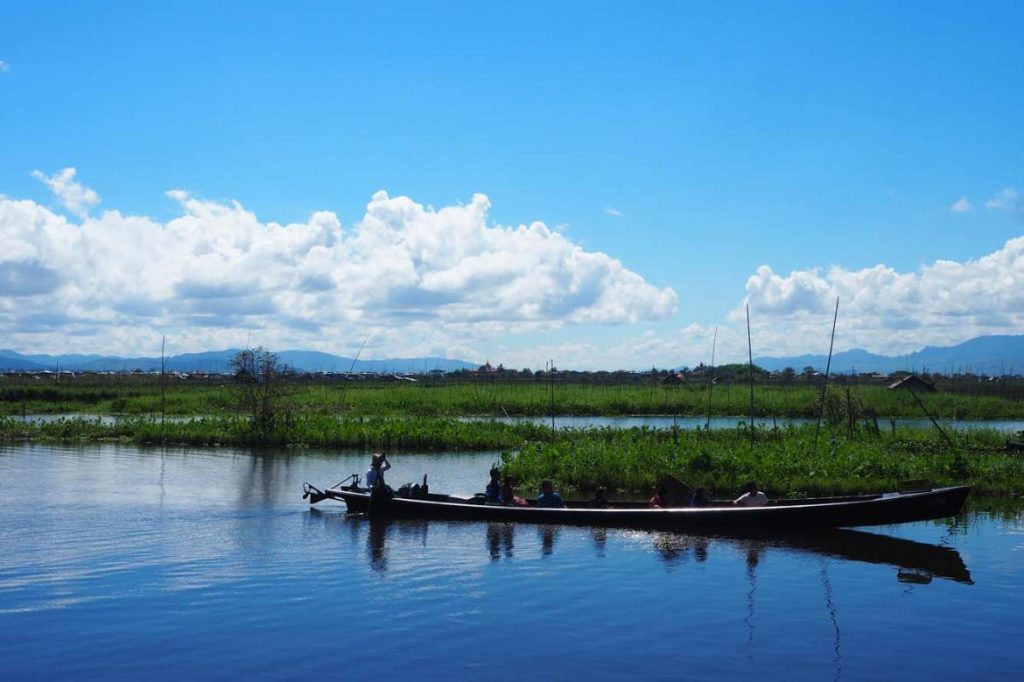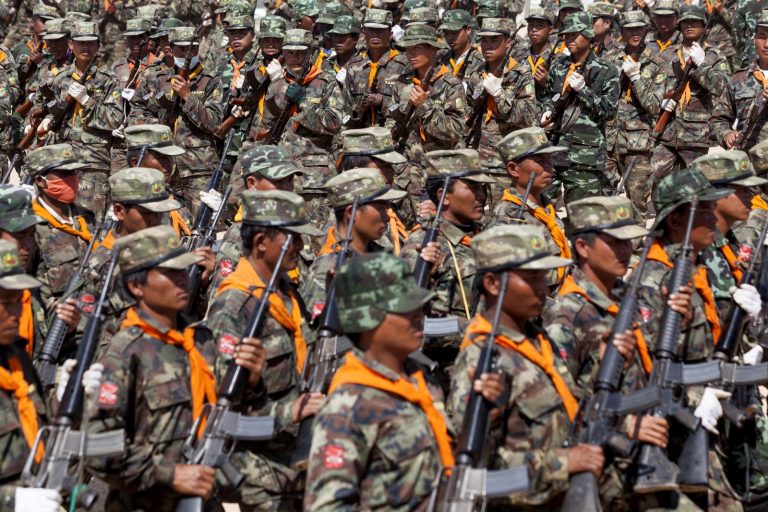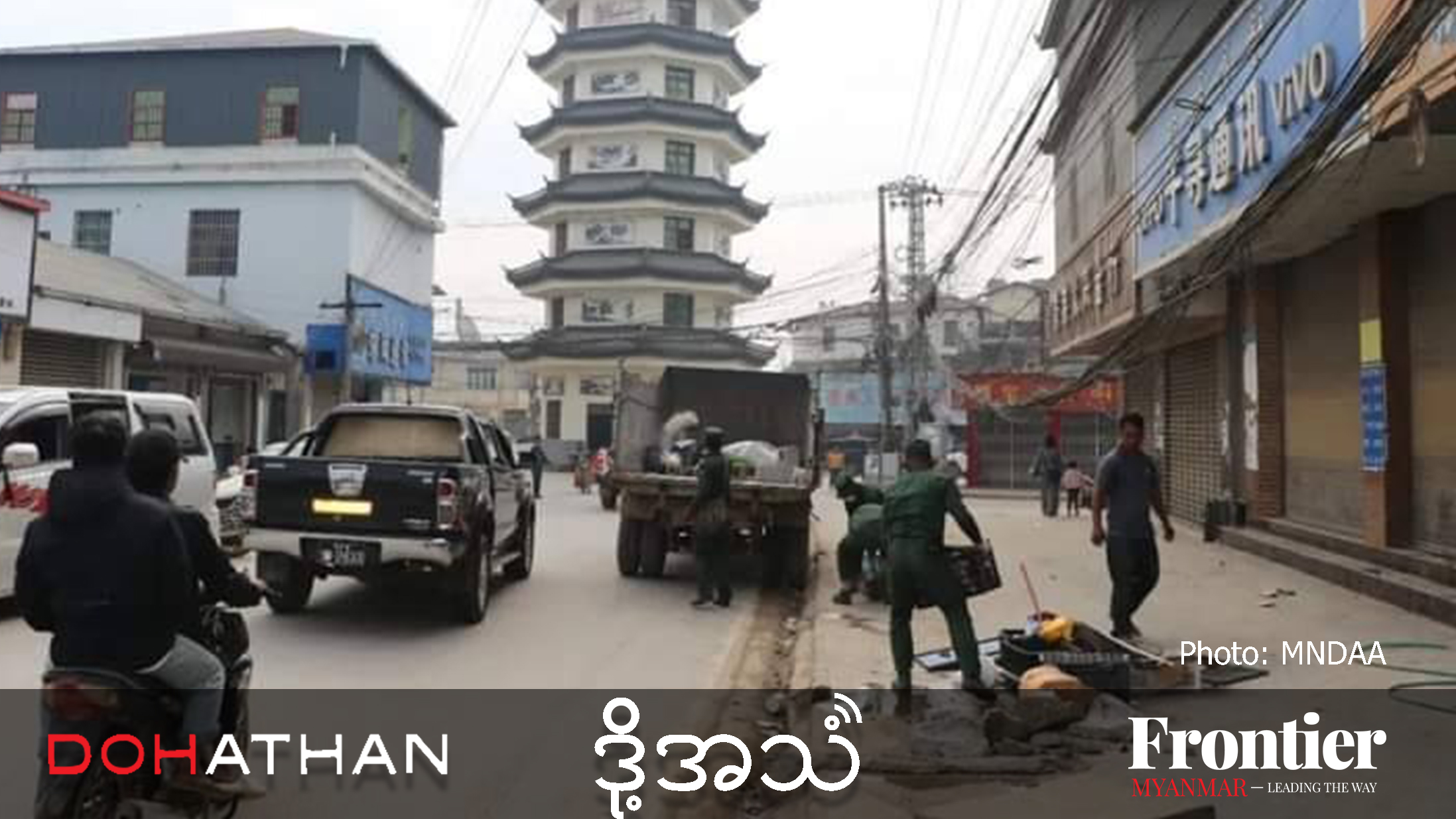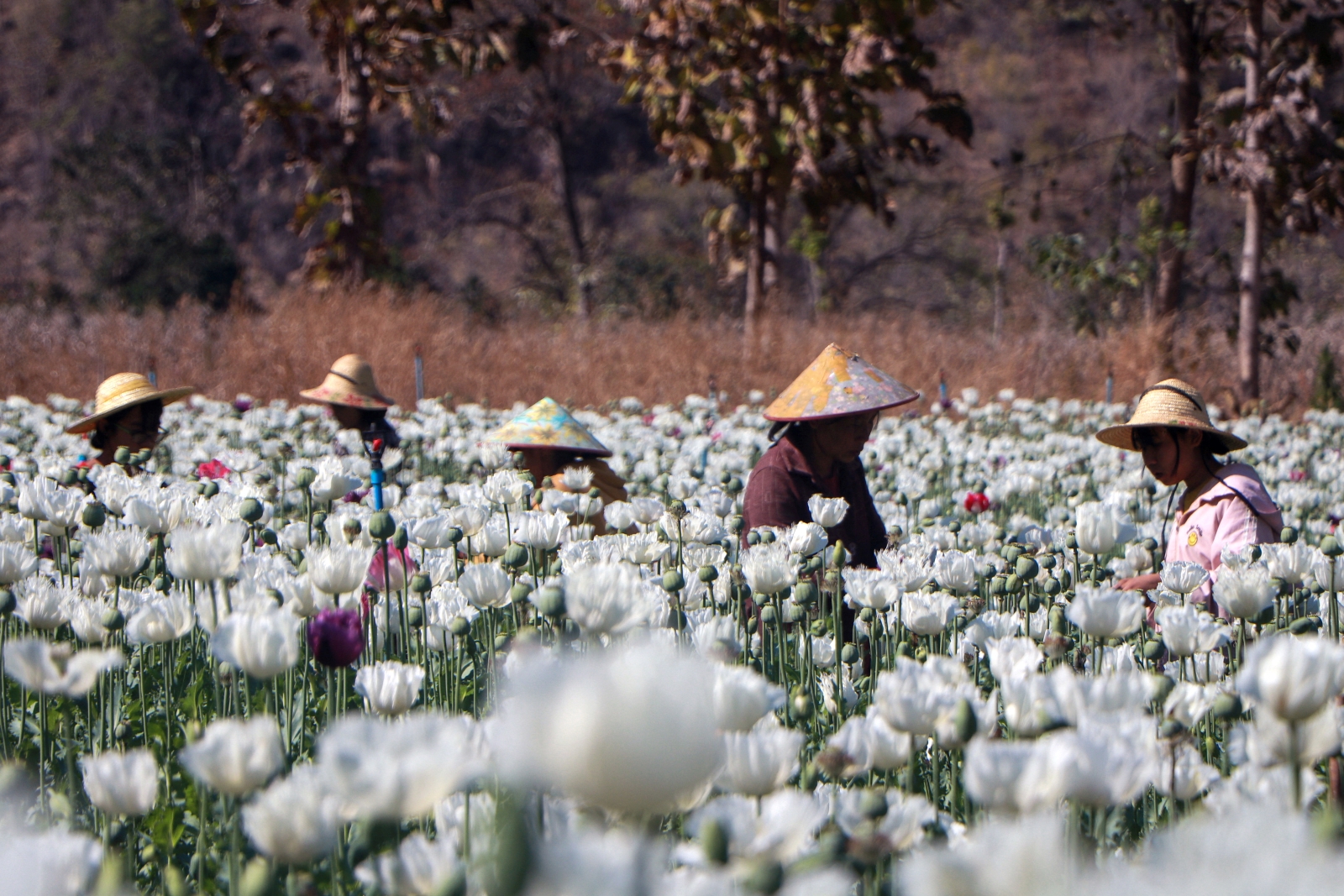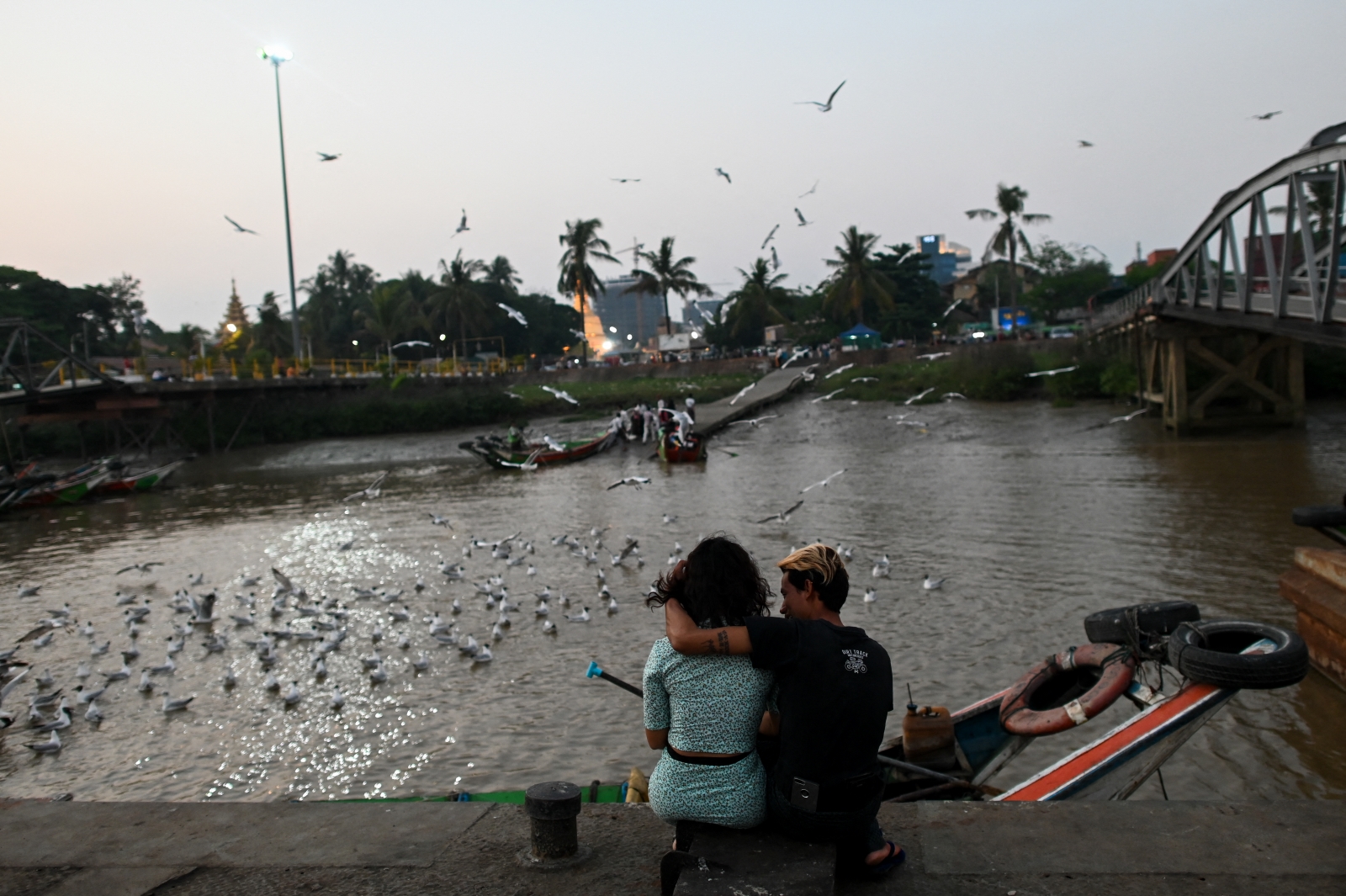Inle Lake and its mismanagement is a case study in the limits of devolution under the 2008 Constitution, and the dispossession of ethnic communities.
By BEN DUNANT | FRONTIER
ALL THE BOATS were booked that day. It was October 27, at the climax of the 18-day Phaung Daw Oo festival, when Buddha images process in a gilded hintha barge between the villages that surround Inle Lake, flanked by canoes decked with silk parasols and paddled by Intha boys in baggy beige trousers.
Frontier instead took a bicycle from Nyaung Shwe, the gateway town at the northern tip of the lake, to the settlement of Ywar Ma. The village, built on stilts, is at the south-western corner of the lake, whose expanse of open water stretches about 17 kilometres north to south and five kilometres east to west, and sits at an altitude of almost 900 metres in the limestone hills of southern Shan State.
The 30-kilometre journey to Ywar Ma was foolhardy. Branching from the road just short of Inn Dein pagoda, a dirt path quickly plunged into monsoon-flooded rice fields; the last two kilometres required flagging down a longtail boat.
Gliding passed the wooden stilt houses at the entrance to Ywar Ma, the scene seemed impossibly idyllic. Blue sky and white clouds were reflected on the surface of the lake, which stretched to a dark green horizon of forested hills. Boats packed with school children and women cradling baskets of vegetables motored through the water lanes of the village, and the golden spire of the Phaung Daw Oo pagoda, the lake’s sacred centre, shone above the rooftops.
Support more independent journalism like this. Sign up to be a Frontier member.
But, according to the man Frontier was there to see, Inle Lake and the people who have traditionally lived on and around it – the ethnic Intha, or “sons of the lake” – were in deep trouble.
Dr Tun Hlaing, who was elected as Intha ethnic affairs minister for Shan State in 2015 on a National League for Democracy ticket, spoke in a mosquito-filled meeting room next to the community hospital that he oversees. A doctor and veteran NLD activist, he sat with a stethoscope around his neck, and his grey hair was haloed with portraits of Daw Aung San Suu Kyi and her father, Independence hero Bogyoke Aung San.
He told Frontier that, when Aung San Suu Kyi visited the village in the run-up to a by-election in Nyaung Shwe in early 2017, she had instructed him to halt the lake’s declining water level and reverse the deteriorating quality of its water.
Tun Hlaing seemed to take this mission to heart, though the means for achieving success were well beyond him or any single government department or ministry, as Inle’s recent history has shown. For decades, the conservation of the lake has foundered under Myanmar’s highly centralised state structure, with its culture of bureaucratic inertia and fragmentation between departments that jealously guard information and responsibilities.
Restoring the lake’s health is a challenge uniquely suited to decentralisation and greater control by local ethnic communities of administration and economic resources. Yet, Inle and its continued mismanagement has become a case study in the limits of devolution under the 2008 Constitution, and the continued alienation of communities from the sources of their own wellbeing and identity.
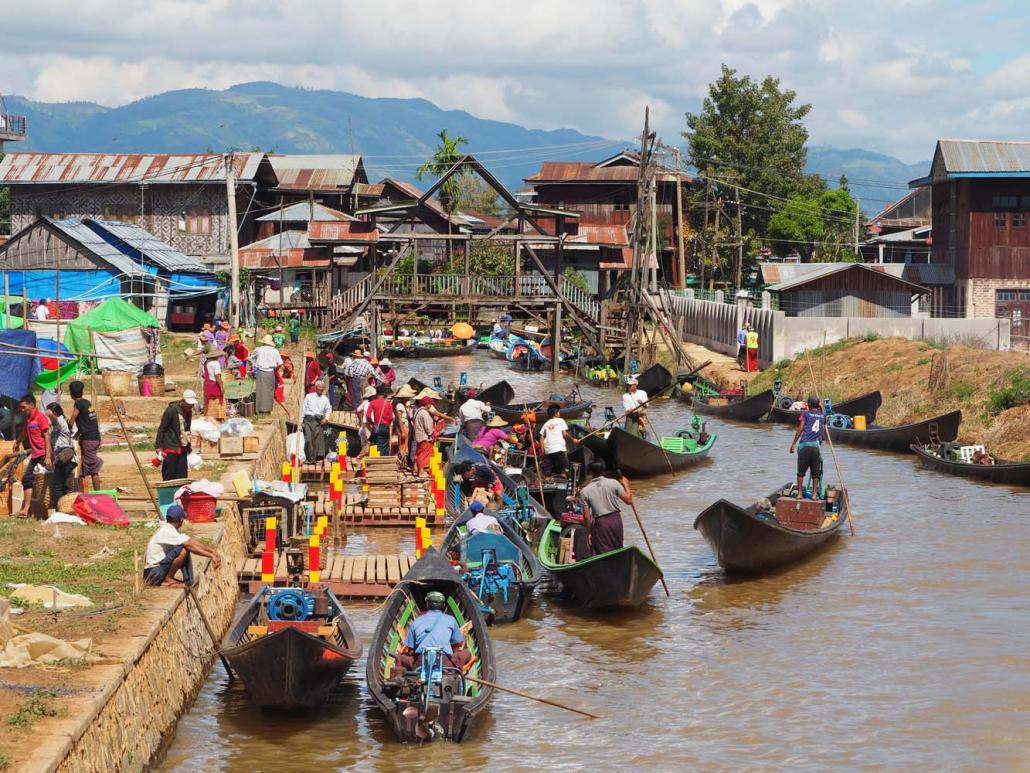
Ben Dunant | Frontier
A shrinking lake
The volume of water in Inle Lake is widely known to be shrinking, though there is disagreement over the extent. A yet-to-be-published study on the “Accelerated Degradation of Inle Lake” by a group of French and Myanmar researchers for the journal Land Degradation & Development, which was shared with Frontier, refuted prior claims of a dramatic reduction in the surface area of the lake.
Using aerial and satellite imagery, and data from a British-era ordinance survey map, the researchers found that the length of open water from north to south had remained broadly stable between 1938 and 2014. The lake’s width was found to have narrowed from about six kilometres to five kilometres due to the expansion of floating gardens, which boomed between the late 60s and early 80s, producing tomatoes that are consumed throughout Myanmar.
However, one of the researchers, Mr Martin Michalon, who traversed the lake on a boat with measuring poles and a hand-held GPS device in 2015 and 2016, found that the maximum lake depth had halved, to 3.18 metres, since a survey conducted in 1918. During the dry season ending in May, when the lake is at its lowest, he found that only 20 percent of measuring points were deeper than one metre. A tall, energetic person could in theory wade across the lake at that time of year. Many of the depths were found to only barely support the continuation of floating agriculture, a major source of local livelihoods.
There is debate over the relative contribution of different factors in the lake’s shrinking, including sedimentation caused by soil erosion and reduced rain catchment in the watershed, despite largely stable rainfall. The effects of deforestation and commercial farming practices on erosion and reduced run-off are also uncertain.
Other threats to the lake and the communities that depend on it include deteriorating water quality, caused by sewage from settlements and chemical fertilisers from floating gardens – the heavy use of which makes organic farming impossible anywhere on the lake – and the boost these nutrients have given to water hyacinth, the spread of which has choked the lake’s biodiversity and even made boat travel difficult in some channels.
These problems have grown over decades and few of them have much to do with tourism, which has boomed since 2011 and is often pointed to as a source of environmental degradation, rather than a source of income and initiative in addressing it. Before Aung San Suu Kyi’s command to Tun Hlaing, former dictator Senior General Than Shwe visited the lake in 2000 and ordered the forestry and agricultural departments to band together and form a hierarchy of committees and task forces aimed at conserving the lake.
Over the years, committees have been inaugurated and shuffled, and “action plans” written with the help of United Nations agencies and private consultants have piled up on the desks of government decision-makers. Yet, all that can be seen on the ground is an assortment of isolated bureaucrats occupying mildewed departmental offices, many of whom reportedly lack the funds even to put petrol in their boats to patrol the lake. Next to them is a series of NGOs implementing projects largely in isolation of each other, leaving the bigger problems of the lake unaddressed.
The sons of the lake
The Tatmadaw-drafted 2008 Constitution vests the Shan State government and its parliament with the power to shape the development of Inle Lake and its watershed. The state government tenders the management rights for collecting the US$10 entrance fee that foreign visitors are made to pay, and the Shan State chief minister chairs the nascent Inle Lake Management Authority, supported by the Norwegian government and the United Nations Development Programme as the answer to the failures of coordination and planning between government departments and NGOs.
Taunggyi, the seat of the Shan State government, is only 30 kilometres by road from Nyaung Shwe. Yet, for many local Intha, rule from Taunggyi is still rule from afar – by people of other ethnic allegiances, with little understanding and empathy towards those who live by the lake, and who depend on it as more than just a tourist asset. Similar attitudes are found throughout Myanmar, and have driven longstanding demands for a federal redistribution of power; but within the astonishing diversity of southern Shan State, they are complicated by multiple layers of domination.
For centuries, the Intha have been hemmed in by other ethnic communities. They are the Pa-O in the hills, whose militia under the Pa-O National Organisation has won the community political muscle and lucrative business opportunities since a 1991 ceasefire; the Shan, whose hereditary saopha (or sawbwa in Burmese) formerly ruled over the principality of Yawnghwe from what is now Nyaung Shwe; and the Bamar, the main constituents of a military who usurped Shan power after a 1962 coup and who, from the 1990s, tried to exploit Inle as a tourist resource for central government coffers.
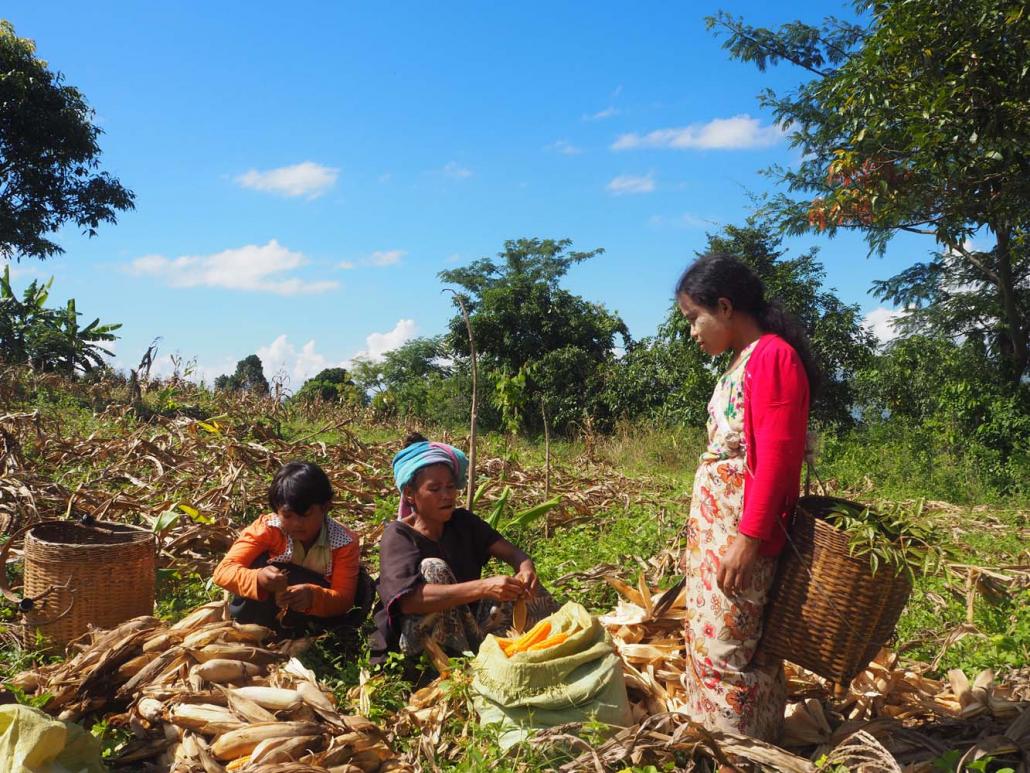
Pa-O and Taungyo farm labourers work together in the hills above Inle Lake. (Ben Dunant | Frontier)
Other communities include the Taungyo, a relatively small group who, like the Pa-O, traditionally practiced rotational, swidden agriculture on the hilltops before the widespread adoption of cash crops in the area, and the Danu, who, also like the Pa-O, were granted a Self-Administered Zone close to Inle under the 2008 Constitution – a prize with modest concessions of autonomy that was nonetheless denied the Intha.
The military junta that took power in 1988 made Inle a flagship destination in its 1996 Visit Myanmar Year. Though ridiculed by anti-junta campaigners as a failed bid for foreign cash and international legitimacy, the tourist drive nonetheless succeeded in increasing the number of foreign visitors to Inle each year from just over 3,000 to about 21,000. This figure was broadly static till 2011, when political reforms paved the way for exponential growth, reaching almost 180,000 by 2016, according to figures from the Ministry of Hotels and Tourism.
However, despite the military’s best efforts to appropriate the bounty of tourism on the lake, tourism has presented the Intha with an opportunity to better themselves. Some in the community have succeeded by translating cultural assets into economic power and, by extension, political influence.
These assets are obvious to any visitor, and include the traditional rowing technique of Intha fishermen, with one leg curled around the oar as it drags through the water; their houses balanced on skinny wooden stilts in the lake shallows; their cultivation of floating gardens, or ye chan, made up mostly of tomato vines grown on decomposing mats of vegetation suspended on the lake surface; and a cottage industry producing silver jewellery, sold to tourists from stilt-houses for handsome margins, with commissions given to the Intha boat captains who bring the tourists.
As the tourism industry grew in the 1990s, a small Intha entrepreneurial class emerged and established some of Inle’s most popular hotels and resorts. U Ohn Maung, who founded the Inle Princess Resort on the eastern shore of the lake, was appointed Union Minister for Hotels and Tourism in 2016, to the excitement of many in the Intha community. U Myo Min Zaw, owner of the Viewpoint Lodge in Nyaung Shwe, now chairs the southern Shan State chapter of the Myanmar Hotelier Association.
However, as tourist arrivals ballooned after 2011, outside money – suspected to be of every shade from black to white, given the importance of the illicit economy in Shan State – poured into Nyaung Shwe town and the Inle Lake area, and the market share captured by the Intha and other local communities began to shrink.
In recent years, the erection of multi-storey concrete hotels, and the daily revving of a dozen or so long distance buses to and from the centre of town during the November-February tourist high season, has turned Nyaung Shwe from a quiet market town to an overgrown mess of potholed roads and noisy building sites, dotted with rubbish piles.
The Inle area now has more than 100 hotels, offering about 3,500 hotels rooms – a situation of grave oversupply, given that the tourism ministry counted 225,224 foreign visitors in 2017, making competition cutthroat and depressing prices. This is worsening, with a drop in Western visitors attributed to the Rakhine crisis. In the 10 months to October this year, the ministry counted only 121,410 foreign visitors. A significant but poorly documented rise in domestic tourists, who pay far less for hotel rooms, is unlikely to compensate in the short or medium term.
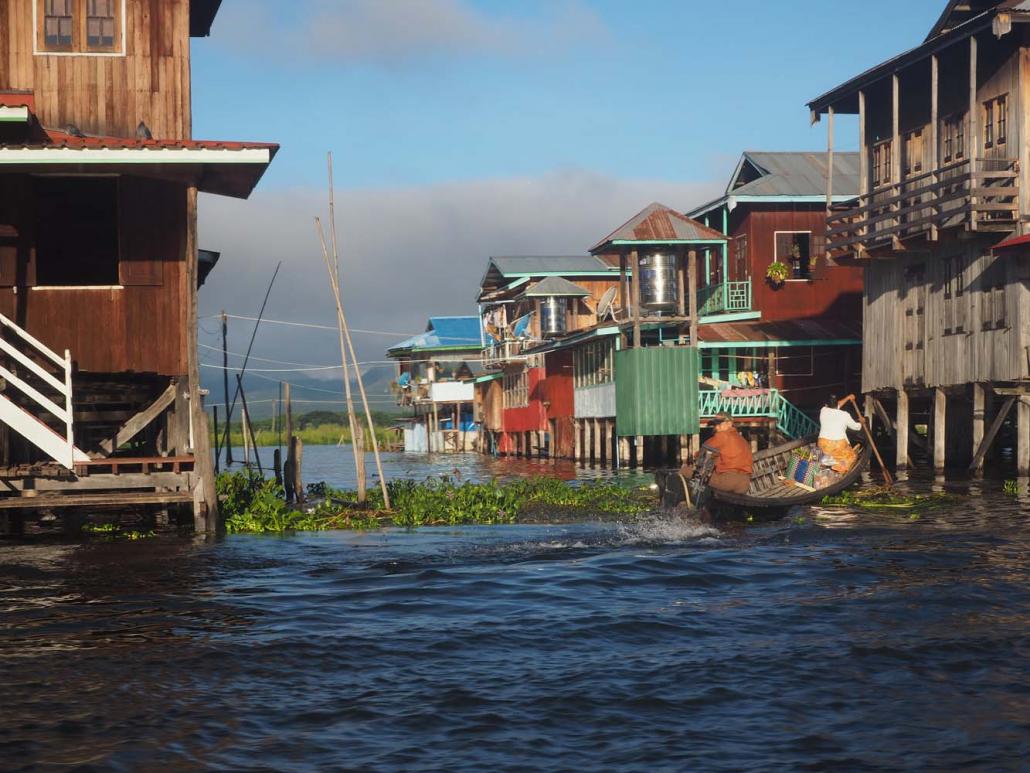
The Intha have traditionally lived on wooden stilt houses on the lake. (Ben Dunant | Frontier)
Back in the dark
Beyond a smaller slice of a now-shrinking tourism pie, Intha community and business leaders point to a more tangible form of dispossession in how the spoils of the $10 entrance fees for foreign visitors are divided.
The junta began levying the fee in the 1990s, at $3. In 2009 it started to auction the management rights each year to the highest-bidding private company. In the years that followed, the tender was held by a series of opaque companies with interests in the hotel sector. The companies were allowed to keep all the ticket proceeds after paying off their bid amount.
However, most years, the amount bid by the winner far exceeded the ensuing income from ticket sales, leading locals to speculate on how the company was really benefiting. In 2009, a company called Hupin, which owns hotels locally, paid the equivalent of $100,000 in a year in which, according to official figures, fewer than 23,000 foreigners visited. That would have netted Hupin less than $69,000.
As visitor numbers surged after 2011 and the visitor fee was increased – to $5 in 2011 and $10 in 2013 – the amounts companies were willing to pay kept climbing. Besides years with a bumper visitor crop, 2014-16, the venture rarely appeared profitable. The company that currently holds the tender, the Taunggyi-based K-Kan, pledged to pay the Shan State government K2.79 billion (about $1.7 million) for the year, company owner U Aung Kyaw Naing confirmed to Frontier via telephone. K-Kan is almost certain to make a loss based on ticket sales.
The control of the tender by K-Kan, a company about which almost nothing is publicly known, represents a row-back in transparency and local ownership.
In May this year, the state government decided to scrap the tendering system and handed the management rights to a consortium of Nyaung Shwe-based professional associations and civil society groups, chaired by Viewpoint Lodge owner Myo Min Zaw. Instead of paying a large tender fee, the consortium deposited the money from tickets each day in a bank account held by the state government, and it published monthly visitor figures – a voluntary measure that won local support.
However, in September, the state government decided to revert to the old tendering system, likely because the daily income from ticket sales was even less than expected and the state government was keen for more revenue, Myo Min Zaw told Frontier. K-Kan, which took over on October 1, has yet to publicly post any figures, or any information about its operations and ownership structure, putting Inle locals back in the dark.
More controversial, however, is what the state government does with the money it receives. Currently, 45 percent goes straight into the state government’s coffers, to be spent elsewhere in Shan. Another 45 percent goes into an Inle Lake Preservation Fund chaired by the Intha ethnic affairs minister, two percent is allocated to tourism promotion in the lake region and two percent is given to local NGOs. The company that holds the tender retains six percent for its operating costs.
Myo Min Zaw considered it unfair that almost half the money leaves the lake. “Our Inle Lake should get 100 percent,” he told Frontier, pointing to the $5 entrance fees levied on foreigners entering nearby Pindaya Township, famous for its caves filled with Buddha images, every dollar of which is retained within the Danu Self-Administered Zone. The Pa-O enjoy the same privilege for sites within their self-administered zone, such as the pagoda cluster at Kakku.
For Myo Min Zaw and Intha ethnic affairs minister Tun Hlaing, this is emblematic of the Intha’s lack of political clout relative to other ethnic groups in southern Shan. “Most of the Inle Lake dwellers want 100 percent,” Tun Hlaing said, referring to the entrance fee income. He said that a proposal to this effect had been submitted this year to the Shan State parliament by lawmaker U Thein Zaw Moe (NLD, Nyaung Shwe-2) but state ministers had told the chamber that the 45 percent allocation was needed for top-up spending in other, poorer townships. The proposal fizzled out.
Meanwhile, the money received by the Inle Lake Preservation Fund, though retained in the area and overseen by Tun Hlaing, is largely disbursed to village development committees in grants of up to K5 million, he said. This prevents it being used for the larger, longer term and more coordinated interventions that many consider necessary to address environmental degradation in and around the lake. The one instance this year when a larger tranche was committed – K240 million for the electrification of villages south of the lake – had little to do with conservation.
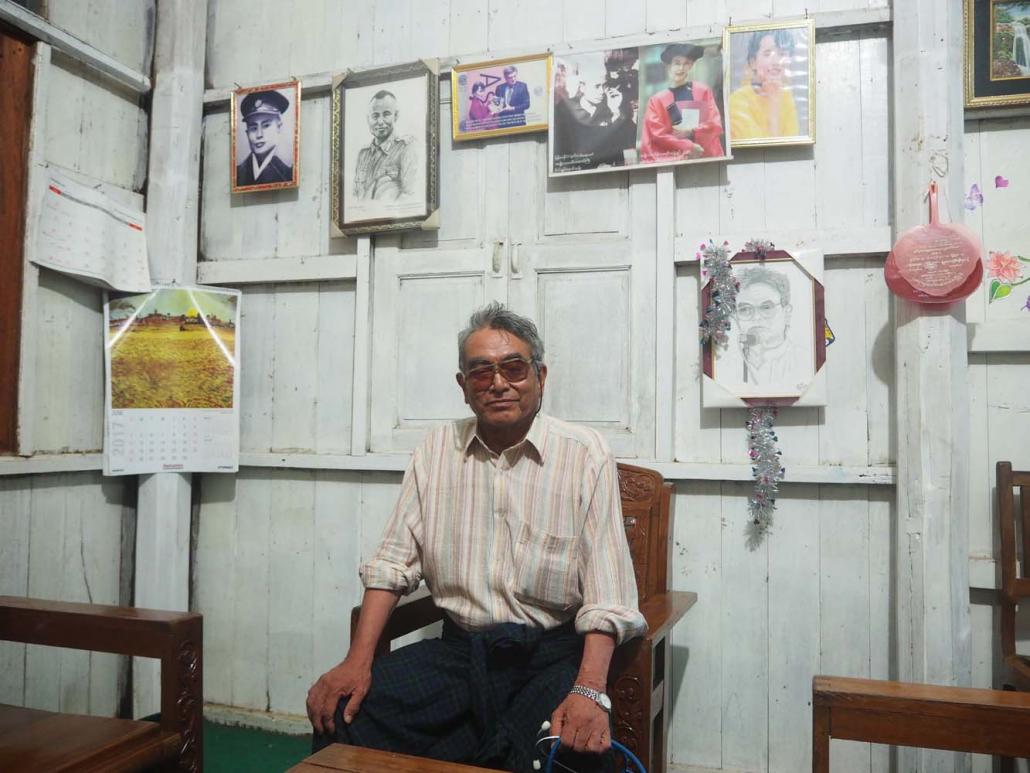
Intha ethnic affairs minister Dr Tun Hlaing. (Ben Dunant | Frontier)
The authority
Though this has yet to be formally advocated, the pot of money that accrues each year from the foreigner entrance fees could be used to provide sustainable funding for the Inle Lake Management Authority, which, once fully operational, would be positioned to spearhead the required interventions. Though the authority held its inaugural meeting and formed sub-committees in 2015, today it consists of a mostly padlocked office with a red signboard on the main canal-side street in Nyaung Shwe.
Myo Min Zaw, who chairs the Inle Lake Authority Office Committee, told Frontier the lake authority awaited the passing of a dedicated law that would provide it with the necessary mandate to corral government departments and steer the input of NGOs. He said the law was drawn up by the forestry department in consultation with other departments, the private sector and civil society groups. A draft was completed this year, but it had since been shuttled between the state and Union parliaments.
Myo Min Zaw said the state parliament had felt uncertain about its mandate because of the inhibiting clause in the 2008 Constitution that stipulates that, though state and regional parliaments are empowered to pass laws in a range of areas, they must not contradict any Union law. This has led to the phenomenon of the devolved parliaments enacting limp “pending” laws, which gather dust until a corresponding Union law is revoked or amended. And so, a matter of great local urgency had entered the congested agenda of the Union parliament.
However, the Pyithu Hluttaw member for Nyaung Shwe Township, U Nay Myo, who belongs to the NLD, told Frontier that the Union lower house natural resources and environmental conservation committee had since sent the draft law back to the Shan State parliament, offering some hope that it could be passed in the near future.
Ko Ni Zaw, a member of Nyaung Shwe-based NGO Inle Speaks, which took part in consultations for the law, told Frontier that he believed the new lake authority could “effectively solve the problems of the lake”. Without an empowered local authority, “decisions take a long time, implementation takes a long time,” he said.
However, one aspect of the lake authority’s organisation has lead some to doubt how effective it will be in practice: It will be chaired by the Shan State chief minister U Linn Htut, a Bamar who was formerly a dentist in northern Shan, and who has no personal connection to the lake and must oversee Myanmar’s largest state.
As Intha ethnic affairs minister, Tun Hlaing will be one of three vice chairpersons. He told Frontier that the lake authority should be headed by someone who lives close to the lake and is “active” in local affairs. Frontier asked if he thought he should have the chairperson’s job.
“Yes,” he said, nodding vigorously.
– Additional reporting by Hein Ko Soe


